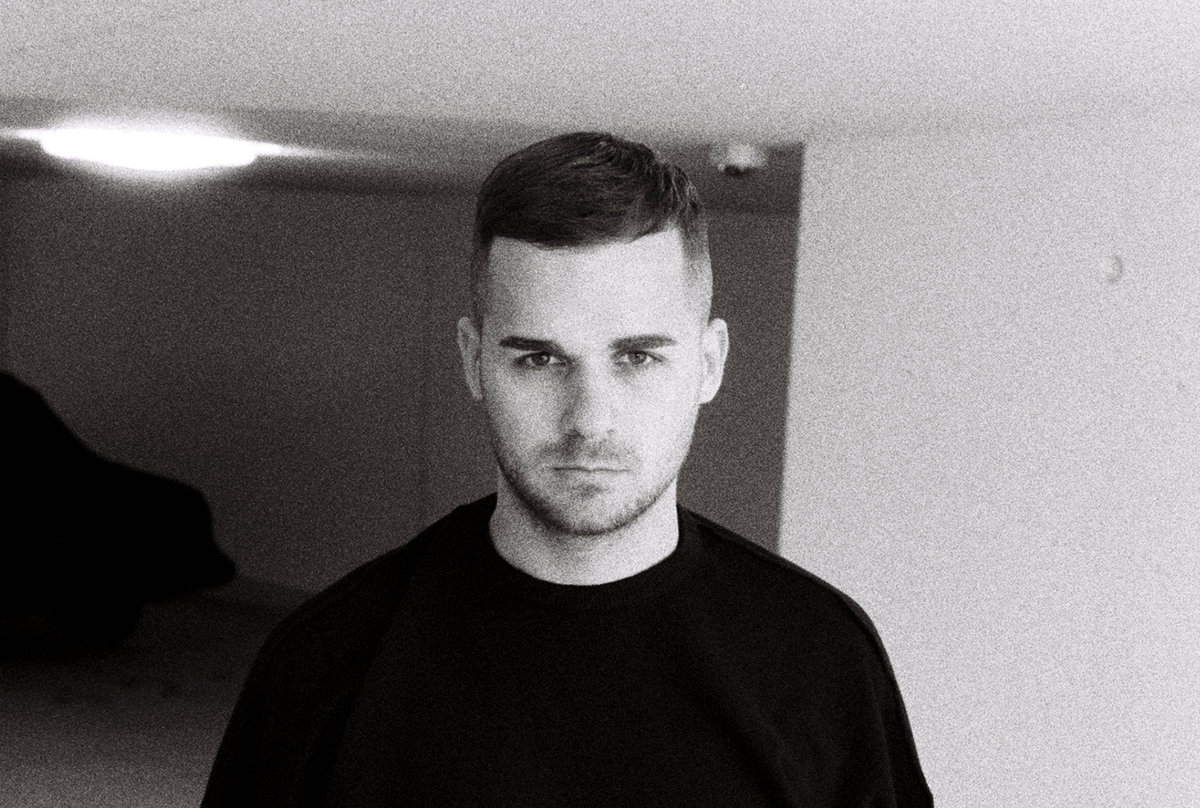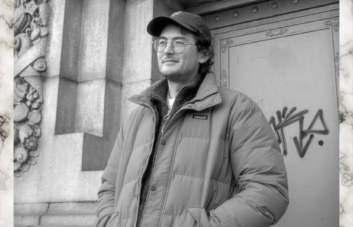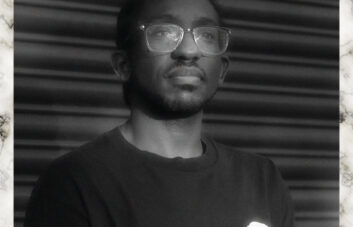As Max Kobosil gets set to release his debut album We Grow, You Decline on Ostgut Ton towards the end of the month, it’s become abundantly clear through reading past interviews how much he values the end package not just with his music, but in everything he does. Telling XLR8R in a recent interview, the eleven tracks only make 50 percent of the album for him. It’s interesting to read that the specific reasoning behind the artwork and track names will come packaged as text that needs to be decoded via the limited vinyl edition – providing context for the release in what’s ultimately a more satisfying manner than say an interview might ever be. It’s a wonderful attention to detail that perhaps harks back to buying records on Discogs in his early teens based on their artwork alone. Now at 24, with five releases to his name and an integral part to the Ostgut Ton family, it’d be fairly easy to fall into a vicious touring cycle with no real aim in sight, though he’s confident that he’s not yet reached his personal goals and that chasing ideals that may possibly never be reached makes this all the more interesting. The contents of Truancy Volume 137 may come as a bit of a surprise to some, but those familiar with his more experimental and abstract productions on RK3 will no doubt understand the want to explore this side of him in a mix format.
Hey Max, thanks for taking out the time to do this mix and do this interview. Just want to start with asking about something I picked out from an old interview where you mention Lee Wagstaff’s RISE Gallery and its exhibitions as playing a key role in your artistic education. Was hoping you could possibly expand on this in relation to your musical career thus far? “Basically there are references to my career in music in everything I do and the RISE Gallery in the north of Neukölln has been an important place for me to discover contemporary art. I will never forget a performance I saw there by the artist Jon John, where he repeatedly drew the words “the two of us“ with his own blood that poured out of an arterial catheter from his arm, to the point where at the end of it he almost collapsed and wasn’t able to walk away. To see and think about extreme performances like this I find really inspiring and also educational for me. I met the gallery’s owner Lee Wagstaff early on. He is an amazing artist in his own right and the first ever piece of art I bought was one of his pictures. I am honoured that I have been able to work with him. He was in charge of all the technical aspects of the screen prints on the RK record sleeves and the upcoming limited edition of my album.”
This artistic education has had a major role in forming your forthcoming album We Grow, You Decline right? It’s interesting to read that you feel the tracks only make up 50 percent of the album for you and that the final package provides a context. “I think the final presentation is the body of the work, the music contained is the mind so to speak. For me as a vinyl collector, holding a record in my hands and also looking at the artwork is a whole different experience to simply downloading some audio files. Discovering the images on the sleeve, thinking about the meaning of the track titles – these are all different and essential elements of a whole package that completes a musical release.”
There’s a quote from your recent XLR8R interview which I have to pull out because I feel lots of emerging producers should read this. It’s where you mention that, “Before you release on a label, it’s really important that you’ve discovered your own sound,” and that, “releasing the wrong music on the wrong label blurs your identity.” Do you find it’s a case of producers tending to chase that label acceptance too quickly and not get to explore their productions enough? “I know of some artists who are at least a little regretful of where they released their first records, as they didn’t consider the whole picture at the time. Everyone has to decide this for themselves and people have different priorities; For me joining a label was like joining a gang or a crew. I wanted it to be a label I really wanted to work with and stay loyal to. This is also the reason why I am super selective about where else I release something, even with podcasts I try to go to selected platforms only. I don’t feel a particular rush to release as much work as possible in a short period of time. It’s important to stop and think about the steps you are taking as you are creating your own sound and story. I feel many young producers don’t lose much time reflecting on what they are doing and things just happen, sometimes maybe a little too fast.”
Expanding on that, do you feel you’ve made the transition from amateur to professional yet, or do you not even see it in that way? “Some people would say – on paper – I’m a professional artist as I make a living from performing and releasing music. I would say I’m a growing person and it just happened that I already got a lot of attention from the outside. I know I have a long way to go to realise my personal goals. This is a complex thing and I’ll probably never be totally content with my output but this is also what makes it interesting – always chasing ideals that can never be reached. It’s an endless spiral but also the way to the end can be the answer and I’m looking forward to hopefully learning more things along the way and creating better music in the future, like many artists have done before me.”
You’ve mentioned in the past that your first visit to Berghain at 18 years old made a considerable impression on you. I’m not sure if Berghain was your first clubbing experience ever but coming from a background in audio engineering, did you find hearing techno and house on a system for the first time just flipped your process in production? Have you always had a fast method to your process as well? “When you’re able to hear this music on a big sound system in an impressive room you can really feel the power of electronic music. Especially techno with its hypnotic and repeating rhythms, it’s a body thing that you need to feel in order to fully understand it. My first time at Berghain was a life changer, but it’s not all about the sound – every weekend there are a thousand people all with different approaches and they are celebrating a kind of ritual together, this is what I think is really impressive. Exploring the music in this perfect setting confirmed my early ideas about how I wanted to produce and develop my own sound.”
You played your live set debut at Fabric back in December 2013 and you’ll be performing live there again next month as well going b2b with Answer Code Request. What have you learnt about your live set in this time period? “I’m more used to playing in front of a big crowd now and I am less nervous which comes with routine. My setup hasn’t changed, I still like the way I use my laptop as a digital tape machine. All the different tracks like the hihats, kickdrum, percussions, synth etc are going to an external 16-channel mixer where I arrange the tracks live. I combine this setup with external effects and a synthesiser.”
You’ve mentioned about being pretty selective with the gigs you choose and that you’re hoping to lock-in some more experimental shows with a more concert vibe, possibly even some sit down shows. What are you finding is attracting you to these types of gigs at the moment, and who are some other live acts that you look up to in this area? “I just like the idea of presenting my music to an audience who aren’t focused on dancing. When I discovered live sets by the likes of Alva Noto or Mika Vainio I was impressed that a lot of people in the audience appeared to be paying a lot of attention to what they were seeing and hearing and I could see the emotion in the artist’s faces. It was very different to what I was used to from watching big concert events on TV where it’s all about a polished show event. An intimate show where you can establish a real connection between yourself and the audience is something I would like to achieve.”
From looking up past interviews I’ve really enjoyed reading about your attention to detail over things like catalog numbers and engravings and I feel despite not being a physical object you’ve still approached the mix with a similar outlook. What can you tell us about the mix? “Thanks for the kind words – I included some not-so-well-known parts from one of the three RK releases. I wasn’t really sure about going so far left-field with this podcast but I trust that people following my work will be able to understand this side of me and hope they will enjoy the mix.”
What else can we expect from you this year after the album drops? “Currently I am working on my label and intend to present some new artists that will join the R – Label Group inner circle this year. I have been producing a lot of music too but will consider my moves where, how and when I will release this material carefully and this remains to be seen.”
Kobosil: Facebook, Soundcloud, Twitter
Kobosil – We Grow, You Decline is out on Ostgut Ton on January 29th, 2016.





So nice to meet the artist a little close by reading something thats shows a bit from the inside. not only what comes out as music.
Great interview, i am a very new fan who met Kobosil by spending my sundays ate Berghain and i have to admit that when he plays , i really feel connected, somehow, the part of me inside that i could/did not know how to express just comes out naturally.